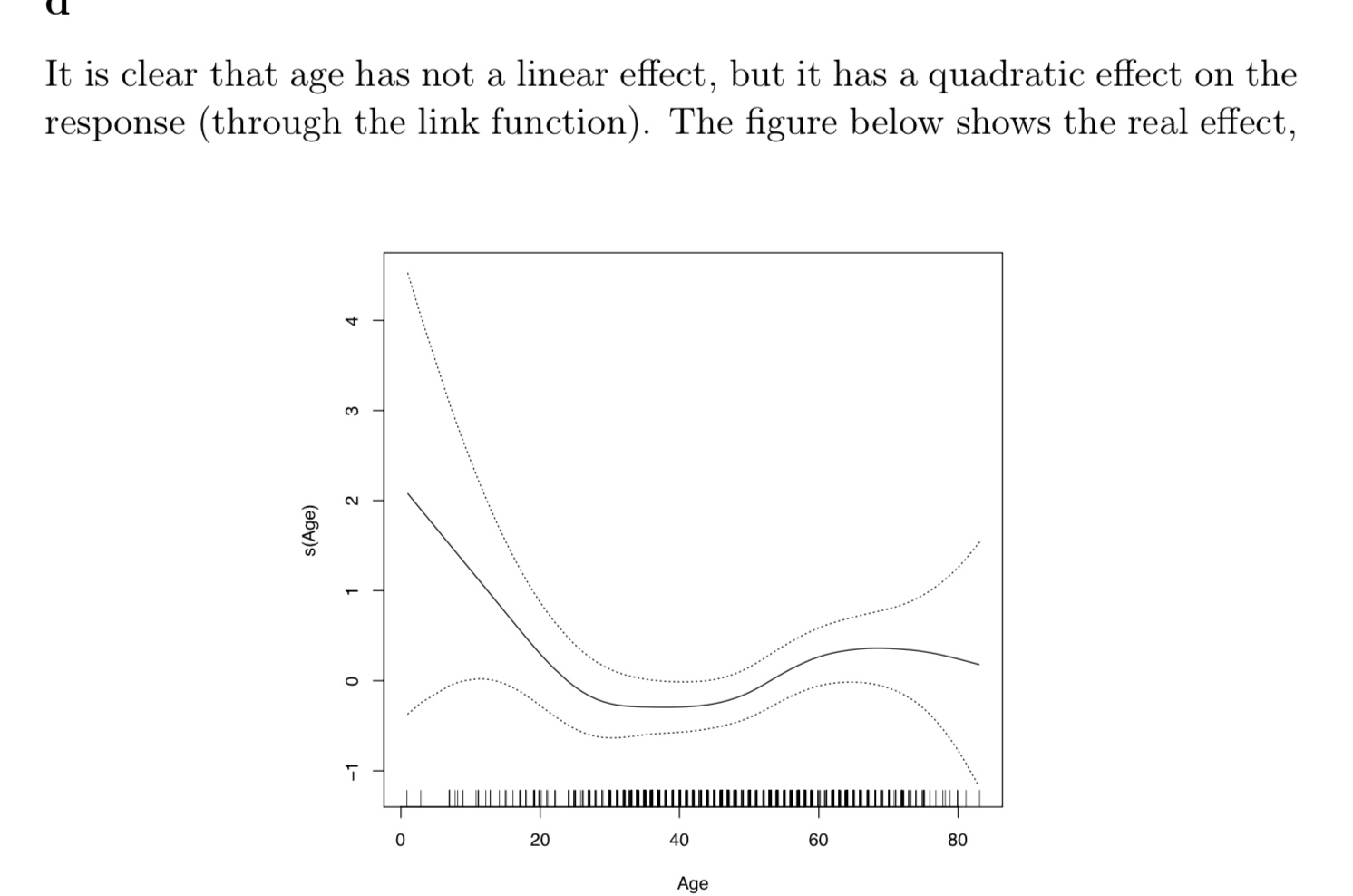I got the following problem: If one would have fitted a generalised additive model allowing a smooth function to capture the effect of Age, which form would have it taken?
Call:
glm(formula = y ~ Age + I(Age^2) + Sex + Height + Weight,
family = binomial, data = data)
Coefficients:
Estimate Std. Error z value Pr(>|z|)
(Intercept) 6.9060592 2.3973921 2.881 0.00397 **
Age -0.0784407 0.0348305 -2.252 0.02432 *
I(Age^2) 0.0009048 0.0003630 2.493 0.01268 *
Sexfemale -1.2326965 0.2539864 -4.853 1.21e-06 ***
Height -0.0320293 0.0151363 -2.116 0.03434 *
Weight 0.0043771 0.0081598 0.536 0.59167
Null deviance: 620.27 on 449 degrees of freedom
Residual deviance: 579.00 on 444 degrees of freedom
AIC: 591
With this data we get the following plot

My question is: How do you manage to see that the plot will have that shape just by looking at the data we have been given? and which covariates do we look at? Are we just lokking at age-squared or age+age-squared?
Thanks for all the help I can get!
